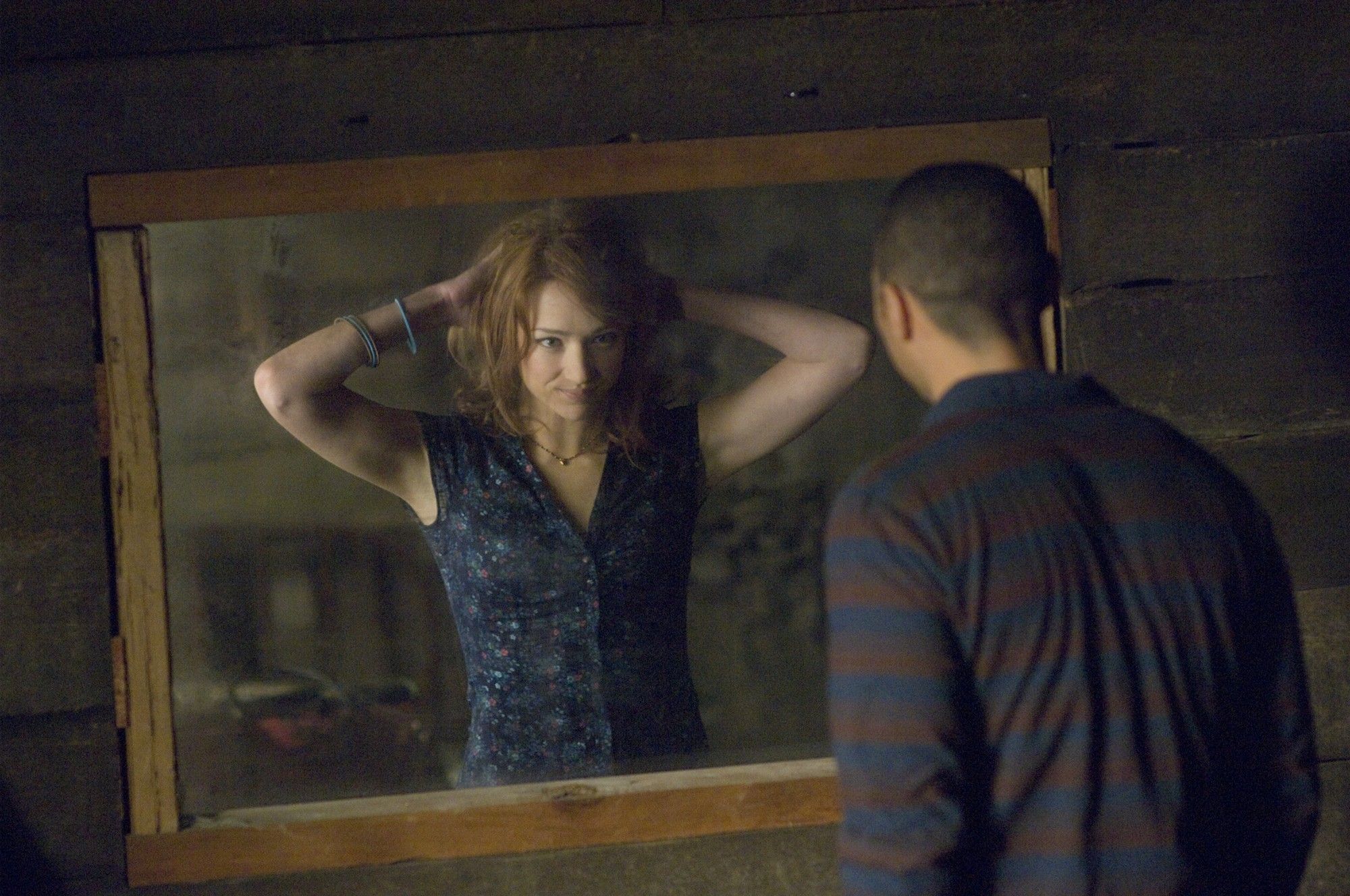Horror film clichés evident in The Cabin in the Woods
Five college students pile into a van and drive deep into the woods for a weekend in a borrowed cabin. Their last stop is of course a decrepit gas station populated by a demented creep who giggles at the fate in store for them.
This is no ordinary cabin in the woods, but actually a set for a diabolical experiment. Beneath the cabin is a basement, and beneath that is a vast modern laboratory headed by technology geeks who turn dials, adjust levers and monitor every second on a bank of TV monitors. Their scheme is to offer the five guinea pigs a series of choices, which will reveal — something. There is some possibility that this expensive experiment is involved with security, and we get scenes showing similar victims in scenarios around the world.
The script was apparently written in only three days. It explores some issues about horror:
* why horror is so potent
* what awful human need is being fed by seeing attractive young people in states of semi-undress who are suddenly, brutally slaughtered, almost as if they are being punished for being young and sexy
* why does the genre adhere so closely to the belief that young people in jeopardy have to be picked off singly, leaving that one character who had initially appeared to be so vulnerable and unworldly, but in whom the situation has uncovered extraordinary reserves of heroism and grit
Character stereotypes teens
“The brain” – mature and thoughtful
“The jock” – action hero
The “easy blonde” – bad girl
“The joker” – “The wiseman” – comic relief
“The divergent” – virginal good girl who will get away after suffering
Character stereotypes middle aged
The balding, bespectacled guy who resignedly shoots the breeze
The middle aged friend who has made a mistake
White coated science/technician types surrounded by screens, dials, buttons and metal fixtures
The woman who is the “brains” while the men are the bosses
Situation stereotypes
Remote location
Creepy old man who gives out warnings to be ignored
Religion as a counterpoint to evil – Latin, bible quotations
Slasher
Zombie
Artefacts which wreak havoc
Dark key-lighting – almost impossible to see at various points
Screams
Gore
Dead animals
Morbid humour
Nods to other film classics in horror genre include:
Hellraiser
The Ring (originally from Japan)
The Shining (elevator)

Could there be some anthropological answer to the ritualist behaviour in horror?
Underlying theme – we’re all being controlled by sinister forces and those in Government are willing to sacrifice a few citizens in order to keep equilibrium for everyone else.


